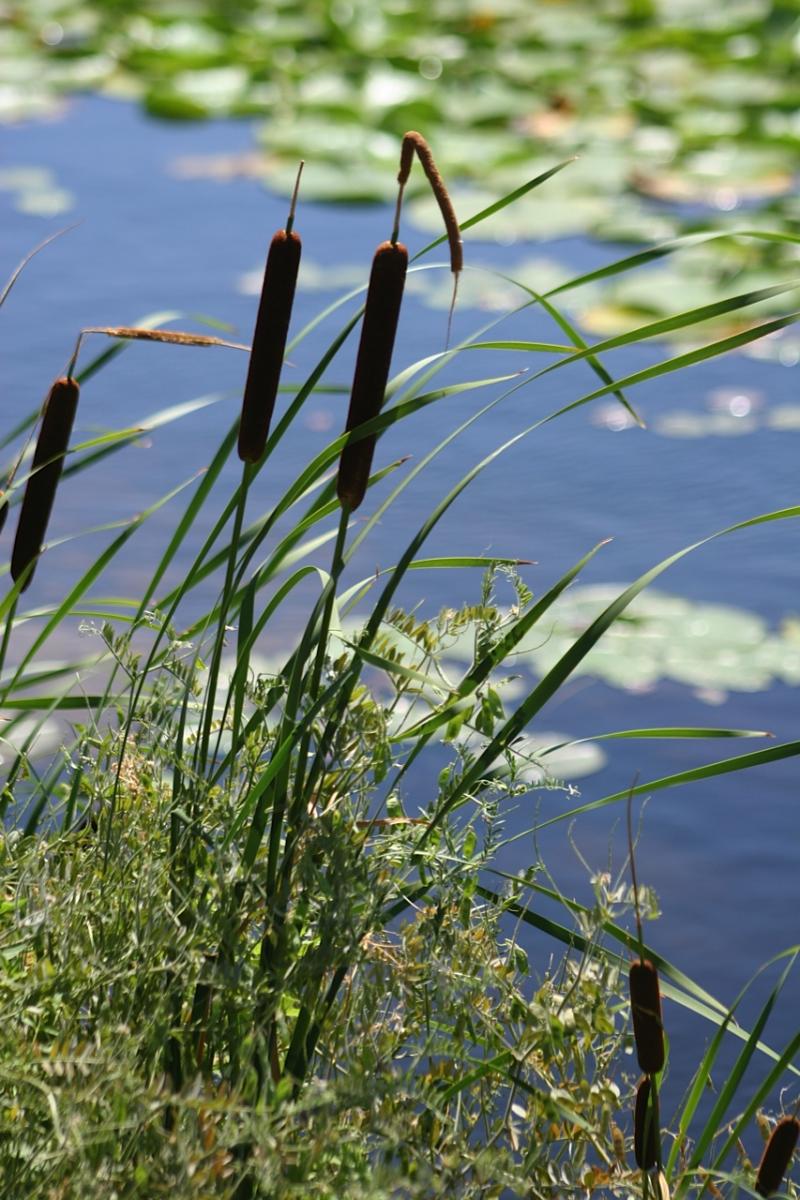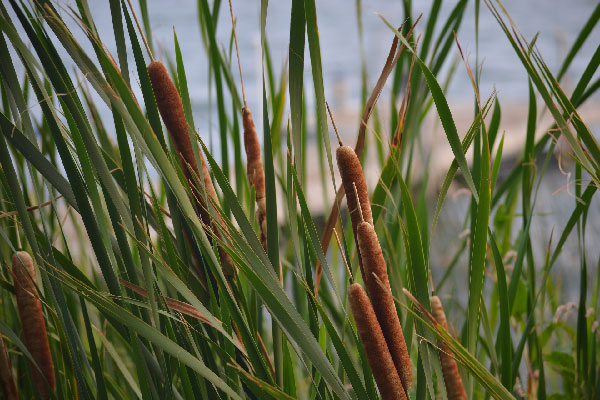Q: I have cattails in my sewage lagoon – what do I do?
A: A wastewater lagoon is one of the oldest, simplest and most cost-effective methods for treating household and small community wastewater. A traditional lagoon system includes plumbing from the house and the lagoon itself.

Wastewater is treated in the lagoon and water is returned to the environment through evaporation. The sides and bottom of the lagoon should be nearly watertight. Weeds, such as cattails, reeds, and other wetland plants should not be allowed to grow on the lagoon sides or bottoms as they can damage the integrity of the sewage lagoon, creating channels that will allow wastewater to leak through. In addition, rooted plants in the water can promote mosquito breeding, encourage aquatic animals in the lagoon and add to sludge levels. Maintaining a lagoon with a minimum water depth of 3 feet helps control rooted plants like cattail
I already have cattail - How do I remove them?
There are four approaches that can be used to control cattails in sewage lagoons. Mechanical removal and hand pulling are preferred to chemical use when possible.
- Mechanically remove the cattails. Cutting the tops of cattails multiple times in a year can reduce the cattail stand by more than 90% in a single year. Cattails can be cut with long clippers, corn knives, power trimmers with metal cutting wheels or sickle mowers. Cut the cattail below the water level or raise the water level in the lagoon after cutting to submerge the cattail.
- Hand Pull the cattails. This will result in faster control than cutting because you are removing the crowns, rhizomes and roots but will require that they are pulled multiple times in a year and that plants are not allowed to grow more than 3 feet above the water surface.
- Use a herbicide. When using a herbicide, always read and follow ALL label instructions. A contact aquatic herbicide, such as Reward (diquat), kills only the green tissue that comes in contact with the herbicide. The cattail will need to be treated multiple times (3 or more) to prevent seed production and see a reduction in the number of cattails.
- Systemic herbicides can be applied to the foliage of the cattails. The herbicide will be moved throughout the entire plant, including the root system. Aquatic herbicides such as a 2,4-D ester or aquatic glyphosate are options which work to remove cattail.
Aquatic herbicides can be applied using a pressurized hand sprayer. Apply herbicides to the green foliage, not the water in the lagoon. You can purchase these supplies at garden centers, landscape nurseries, or agricultural chemical suppliers such as local coops.
Updated 12/2022

